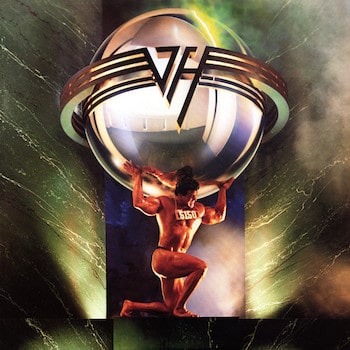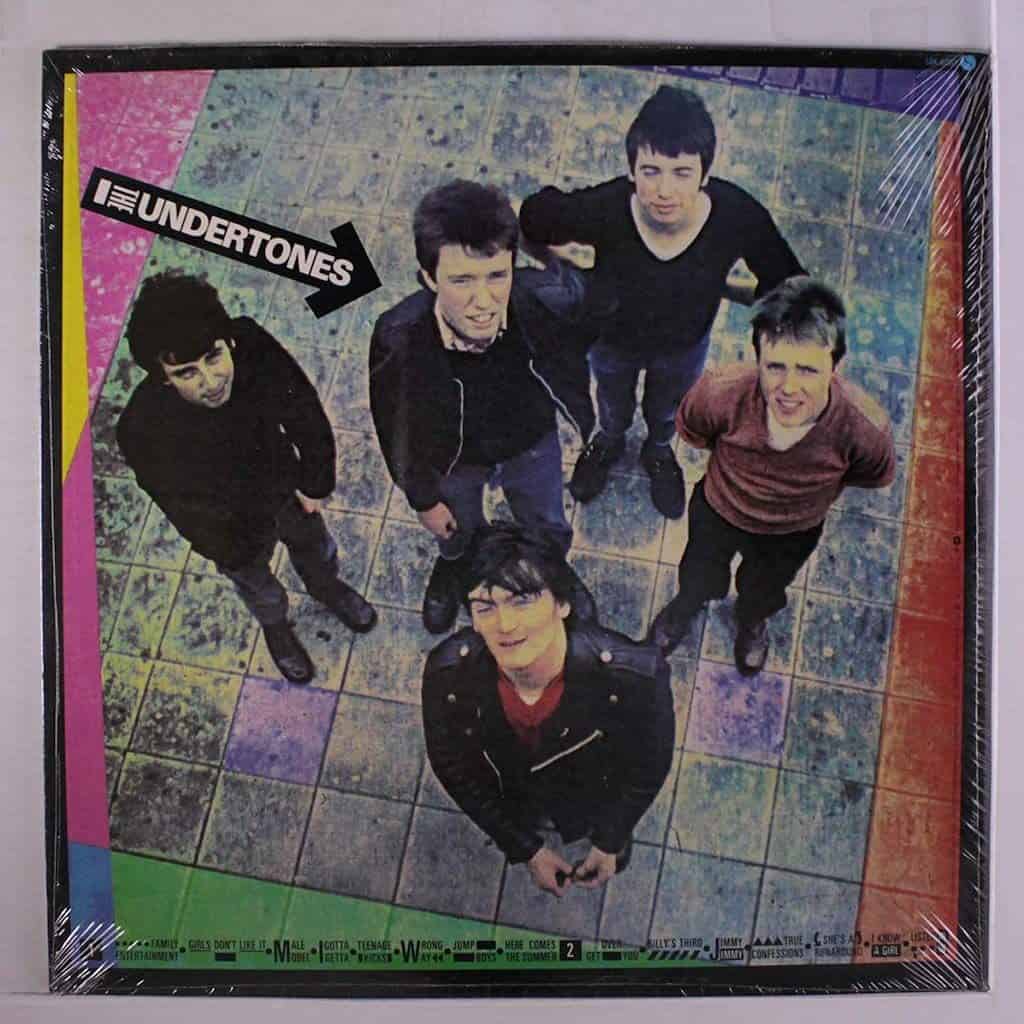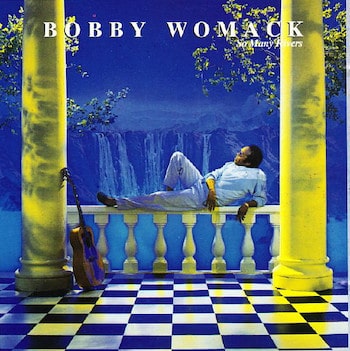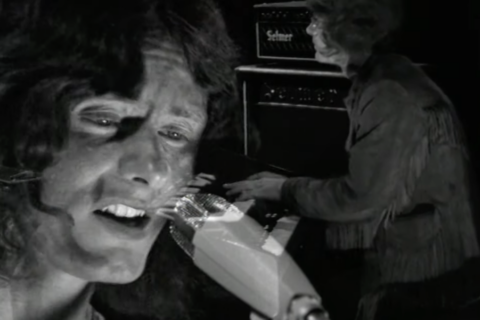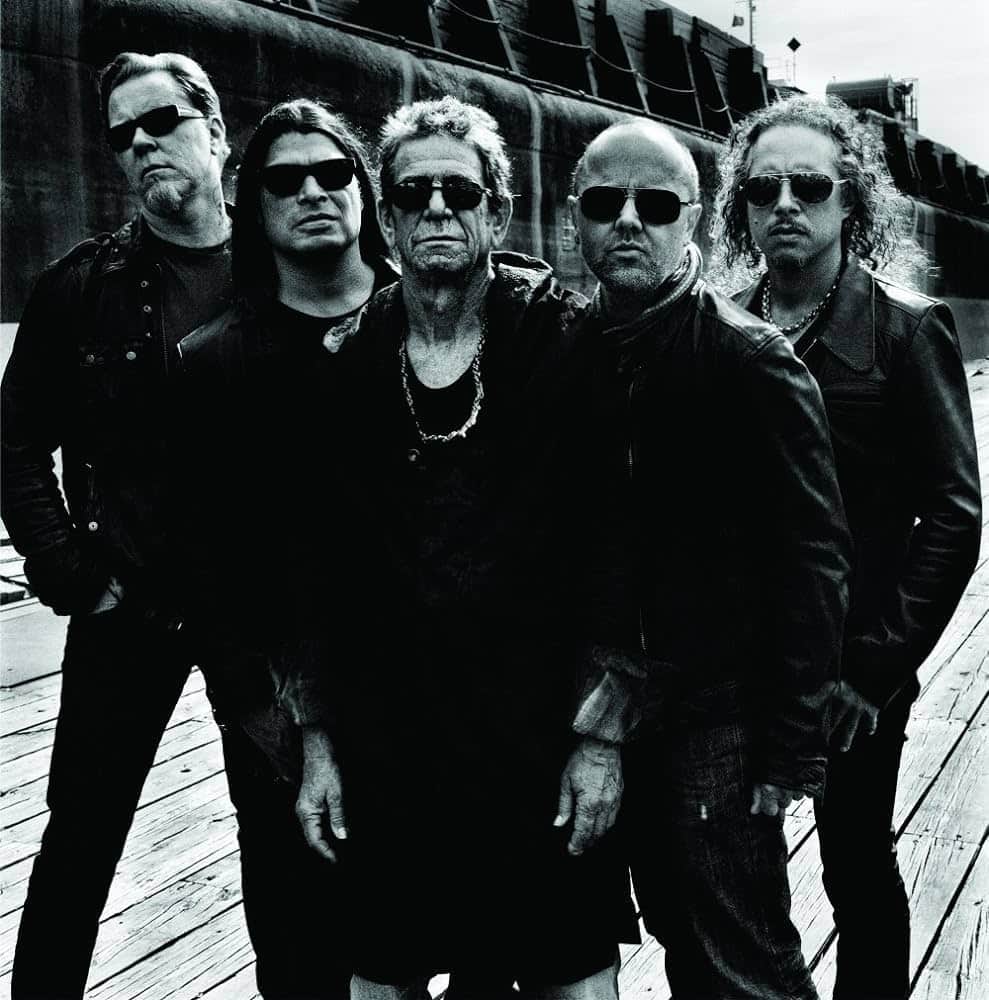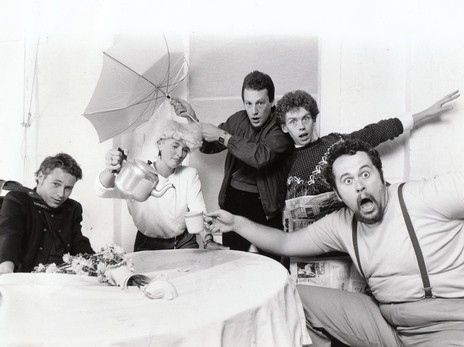Gary Steel is slowly compiling all his album reviews in one place. This is a work in progress, or what we call a “live document”. Today is the letter ‘V’.
V
Vain – No Respect (Island)
1990/RTR Countdown
It’s not like respected label Island to sign up a bunch of HM wannabes, but that’s what Vain are, just a little more explicit than most of their teen oriented contemporaries. 5/10
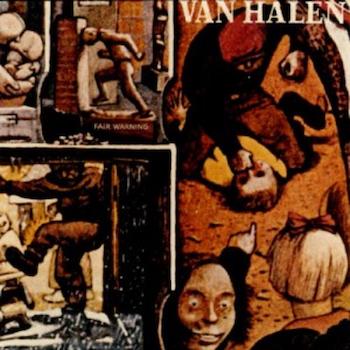 Van Halen – Fair Warning (Warner Bros)
Van Halen – Fair Warning (Warner Bros)
1981/In Touch
Here’s what metal fans want to hear: “Van Halen’s latest, Fair Warning, is heavy. After last year’s tepid predecessor, this one delivers the real good again. The sound is thick and pounding, and there’s a fairer sense of dynamics in the mix than most similar bands allow – there are soft and loud bits.” Here’s what the metal opponents want to hear: “This is a violent, plodding album full of the usual sexual humiliation and violent imagery. Its horrific cover is truly a winner in the grotesque bad taste stakes.” The truth is probably somewhere between those two poles of thought. All of it is probably true. Me: I’ve given up trying to pin down exactly what’s wrong, morally and spiritually, with music like this. Let’s just leave it at that, eh? 5/5
1986/Wellington City
Van Halen were always a cut-and-a-half above the heavy metal competition. They had Eddie Van Halen, whose guitar revolutionised modern rock. They had frontman David Lee Roth’s sense of humour. Nothing was sacred, and nothing was worth getting too serious over. Van Halen’s strangled guitar is still here with all its tricks, and the production is wide-screened enough to allow a dynamic element into otherwise average songs. But the new singer, one of this earth’s most noxious individuals, Mr Sammy Hagar, deserves a good dose of 2,4,5-T. But then, I never listen to their records anyway. 5/10
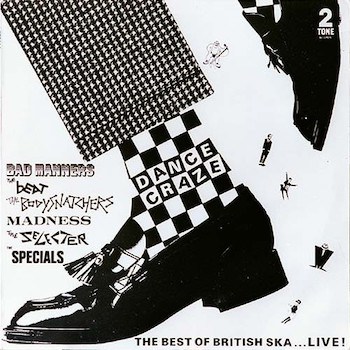 Various Artists – Dance Craze (Chrysalis)
Various Artists – Dance Craze (Chrysalis)
1981/In Touch
This is not merely one of the best ever party records, it’s also one of the true few live records I’ve heard that gets the concert atmosphere down on vinyl. Also, and most importantly, it’s the best possible introduction and representation of British ska.
It works double well because there is/was a unity between the movement’s representatives, though the album also clarifies and clearly reputes any claims that all ska sounds the same.
Side 1 is rage nearly all the way, while side 2 calms down in tempo, if not in terms of tempo and audience participation. Group efforts are balanced democratically.
The bands represented are the 2-Tone bands, past or present: The Specials, Selector, Madness, The Bodysnatchers, The Beat and Bad Manners. And all bands come up shining.
The Specials, the impetus behind the whole thing, are in this reviewer’s opinion still the best of the bunch. Their sound is special, their contributions here being ‘Concrete Jungle’ (which opens the album to the beat of “Da-da-da-da-dum/Da-da-da-da/Milo!” and sets things in a festive mood, ‘Man At CIA’ (serious stuff with strong horns and war rumbles) and the rousing set finisher ‘Nite Klub’.
The Selector demonstrate their very different form of ska-going-on-rock’n’reggae on ‘Three Minute Hero’, ‘Too Much Pleasure’ and ‘Missing Words’, which is “another song dedicated to the Tory government and the shit they’re leading us into.”
The Beat have a chunky, strong but graceless sound which I find less than appealing in general, but their ‘Mirror In The Bathroom’ is a great pop song in anyone’s book of rules. Audience feedback carries anticipation through the social conscience of ‘Big Shot’, but nothing can save a filler like ‘Ranking Full Stop’.
Madness, who most of us are over-familiar with in the wake of the recent tour, do predictable faves ‘One Step Beyond’ and ‘Night Boat To Cairo’ – trashy and overrated. They redeem themselves on the serious ‘Razor Blade Alley’.
Bad Manners, a rather inconsequential group but a lot of fun, play one of their silliest and best songs, ‘Lip Up Fatty’, and a slight, chunky semi-instrumental, ‘Inner London Violence’. Lastly, the now-defunct all-girl group The Bodysnatchers contribute ‘Easy Life’, a ramshackle but dynamic performance.
And that’s it. It takes a lot to get me interested in suffering the sweat and danger of a live concert these days, but this album nearly convinced me that concerts are worth going to for those rare times they really do serve a purpose. I say nearly, because I’d rather stay home and listen to this, which has most of the advantages and none of the disadvantages of the real thing. 8/10
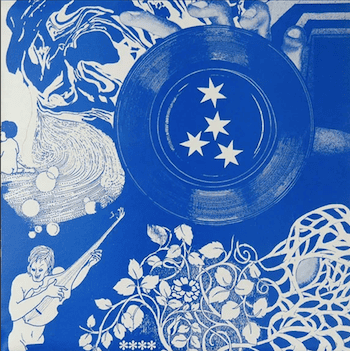 Various Artists – **** (Sausage)
Various Artists – **** (Sausage)
1980/In Touch
Along with The Gordons’ magnificent debut single, **** is one of the most exciting releases this year. Not only is the music incomparably nonconformist, but it’s uniformly of world standard. Each band is distinctly original, yet the tracks complement one another through a common cause: rebellion, subversion, anti-police and authority (or something along those lines).
Without more ado, the people on this record are: The Wallsockets (whose idea this was), Life In The Fridge Exists, Naked Spots Dance, and Beat Rhythm Fashion. Wellington bands all, though it is unkindly parochial to emphasise that fact.
Life In The Fridge Exists, a loosely-assembled collective of whom photographer/writer Michael Gallagher is the brainchild, contribute three tracks. ‘Have You Checked The Children’ is the most convincing. It’s a menacing slice of teenage rebellion/subversion with Lady Sam providing voice of steel narrative: “Your children hate you!” ‘First Death Take’ is a manic-depressive Gallagher-led pained-voice tirade, but I can’t hear the words so comment is reserved. ‘Peter The D’ closes the album. It is a manifestly ponderous riff, a vivid, descriptive sax complementing Gallagher’s narrative about, well… buy the album. Pity LIFE’s most famous tune, ‘Phil O’Brien Song’, had to be omitted for legal reasons; fated to lie in the vaults of libellous infamy. Though LIFE do become tiresome on too many repeat listenings, they’re the surprise of this record in that their tracks aren’t as disposable as many thought they would be.
The Wallsockets are a comparative disappointment. Their performance is strictly sub-standard garage punk. Their main assets on vinyl are the songs and Lynette’s vocals. They have a knack in composing nifty little anthems, the samplings here being ‘H&C’, ‘Euthanasia’ (which puts forward the case for putting granny in her grave), ‘Blue Meanie (anti-cop harassment) and ‘Snerl’ (a lovely little novelty with one of the classic simple guitar solos of all time).
Naked Spots Dance have by far the most potential of these bands – apart from the fact that they’re now the only really functioning one. Their music is already so evolved and curiously complete. It leaves spaces that remind one of Jefferson Airplane (don’t laugh) without the ponderous pretension. Yet the musicianship is genuinely creative, with Levene-type guitar and a great pouting-voiced lady singer. ‘Secrets’, and particularly ‘Crescendo/Circle Moon’, are the most impressive. The latter begins with a spiraling invective against a career-
orientated type, and then sinks into a heady, atmospheric vein repeating: “The moon came out tonight/I sat there watching it/The moon came out tonight/There was no stopping it.” ‘Banana Baby’ appears to be a mean put-down of sexual stereotypes, while ‘Subtractions’ is surprisingly conventional by comparison.
Beat Rhythm Fashion are a studio conception and creation. Their two tracks are ‘None In The Universe’, an almost American-sounding pop tune with sneer, and ‘Not Necessary’, which boasts the immortal lyrics: “Not need no house/Don’t want my own home/I would prefer to be made of air/It would make me so happy/Not to be here.”
Unfortunately this review is rushed due to impending deadlines. I can only stress that this is one to buy, folks! 8/10
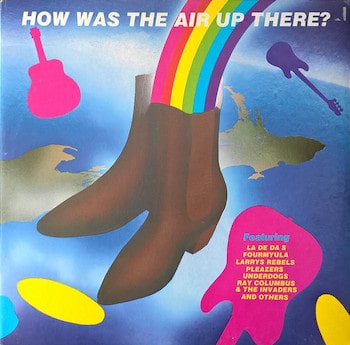 Various Artists – How Was The Air Up There?
Various Artists – How Was The Air Up There?
1980/Evening Post
Applause to rock historians. And accolades to K-tel – marketers of dozens of el-cheapo TV-promoted records – which has brought to realisation a project of quite considerable retrospective significance; an album of 1960s NZ pop hits and obscurities called How Was The Air Up There?
The music falls essentially into two categories: that of rhythm and blues, and pop. Both fields are in the main fully derivative of their British influences, though much of it has a particularly Kiwi flavour.
At a more-than-generous 11 tracks per side, an in-depth description would be space consuming. Its compilers have obviously gone into New Zealand rock history in some considerable depth to come up with such an excellent cross-section of big hits and quaint oddities.
The most professional-sounding music here belongs to our biggest ‘60s pop success. The Fourmyula, represented here by the naïve charm of ‘Come With Me’ and ‘Nature’, which continues to stand as the all-time greatest New Zealand single. The Fourmyula, it is interesting to note, contained members Wayne Mason and Carl Evensen, later to surface in Rockinghorse, and a drummer called Chris Parry, now manager of British group The Cure, and owner of Fiction Records.
Clean-cut heartthrobs Larry’s Rebels provide mainstream, lightweight, likeable pop tunes ‘Mo Reen’ and ‘I Feel Good’, the latter of which was to be revived a decade later by another New Zealand group, Citizen Band.
The pop psychedelia of ‘How Is The Air Up There’ by The La De Da’s (featuring Kevin Borich on guitar), and the Hi-Revving Tongues’ serious social commentary ‘Tropic Of Capricorn’ are both worthy of America’s legendary Nuggets garage band compilation.
The big surprise of the package, to those who weren’t old enough at the time, is that Ray Columbus (of The Invaders) once had it in him to produce a classic such as ‘She’s A Mod’, which was even released in the United States.
But in many ways, it is the oddities that make this such a fascinating collection. The Four Fours (‘Go Go’) sound like they’d trash their instruments at a moment’s notice, yet they are the band that later evolved into the successful Human Instinct. And did you know that Christchurch once boasted a fine sleazy r’n’b group named Peter Nelson & The Castaways?
The high point for many could be the trash aesthetic of The Pleazers’ strained, over-the-top version of Van Morrison’s ‘Gloria’ or The Librettos’ ‘Let’s Go’, a definite contender for the all-time bad taste award circa ’66. Their sub-Shadows contribution is even introduced by the fab TV host Pete Sinclair.
There must be lots more where these came from and it’s to be hoped that second and third volumes will ensue. 8/10
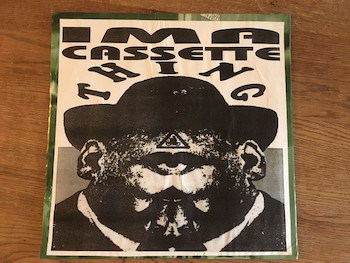 Various Artists – Ima Cassette Thing (Ima Hitt)
Various Artists – Ima Cassette Thing (Ima Hitt)
1984/TOM
A well-packaged selection of otherwise unreleased material by alternative NZ artists. Kiwi Animal perform discrete personal vignettes which appear insubstantial when scrutinised but work when you let them. Four of them are here. Ralph Bennet sings an acoustic country/folk number which is a ‘Love Song To Wellington’. Say Yes To Apes from Invercargill are wilfully obscure and eclectic; often interesting and sometimes strained. Not quite 100 percent, but their two songs tell all. The Forced Cup sound like a Bible Class group sitting around a campfire singing variations on ‘Jesus Loves You’ with a wonky tape recorder taking in proceedings. Four songs! Smelly Feet contributes his brief historic advert, and Belsen Waifs play three songs that leave absolutely no impression. Otis Mace is as corny as always with his number, ‘Axolotl’, and Fishschool rage to a ragged end of the tape.
Not the greatest sound quality, but good packaging and good stuff for collectors if you happen to be into these particular musicians. Or not. Available for $6.30 from Ima Hitt, Box 407, New Plymouth. 7/10
Various Artists – Just Teasing: New Zealand Rock Volume 1 (Z Records)
1990/RTR Countdown
From the Waikato, no less! Along with some seriously naff selections there are a few pleasant surprises. Jim ‘An’ Joe’s peculiar Scritti Politti-influenced ‘(Can’t Do It) Without You’, for one. But there’s too much nostalgia, and too many lingering synth-pop echoes. 6/10
Various Artists – Lambada (CBS)
1990/RTR Countdown
Good value! Sixty seven minutes of punishing dance rhythms. I lie, though. These dance tracks are positively anaemic. Try some fiery salsa or the Gypsy Kings instead. 3/10
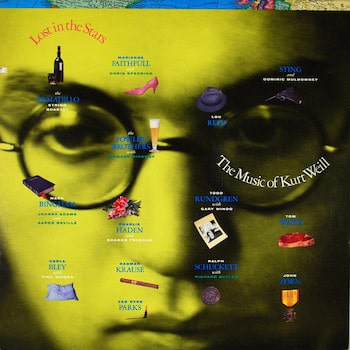 Various Artists – Lost In The Stars: The Music Of Kurt Weill (Festival)
Various Artists – Lost In The Stars: The Music Of Kurt Weill (Festival)
1986/Wellington City
As a collection of disparate interpretations of one of this century’s important composers, Lost In The Stars is both adventurous and successful. Through an ambitious and risky choice of musicians, this project has brought out the stylistic identity of many of its participants while elucidating aspects of the songs rarely touched on. Rock names from Lou Reed to Sting to Tom Waits to Marianne Faithful; and various acclaimed avant-garde and jazz artists, all put their stamp on Weill’s popular and lesser-known material. It’s a difficult concept to come to grips with; sixteen songs performed with little in the way of stylistic thread. And those expecting the obvious – the haunting sentimentality of ‘September Song’, for instance – will probably be shocked. Lou Reed is not a sentimental man. 7/10
 Various Artists – Machines (Virgin)
Various Artists – Machines (Virgin)
1981/Evening Post
At last, here’s an intriguing compilation album with coherence and unity. Machines, featuring 12 electronically-inclined rock bands, is of interest to both connoisseurs and the not-yet-initiated to the synthesiser-based subgenre.
There is of course a measure of paranoid futuristic ditties (by Gary Numan and John Foxx) but the overall effect is one of variety and even humour.
Henry Bukowski’s ‘Making Love With My Wife’ is particularly novel and the album also contains some previously unreleased (in New Zealand) treasures by, among several others, Public Image Ltd. 7/10
Various Artists – Max’s Kansas City Volume 1 & 2 (CBS)
1980/Evening Post
Max’s Kansas City Volume 1 & 2 comes in a double package for the price of one. The second volume was recorded in 1977 and is a slick rock marketing exercise using the guise of the famous punk nightspot to promote a number of no-hoper mainstream rock groups.
The first volume originates from 1976, and the sound quality is of bootleg standard. Apart from the novelty value of Wayne (later Jayne) County and uneventful synthesiser duo Suicide, there is nothing of merit.
Except for the one track that makes the purchase price worth every cent, that is; Pere Ubu’s brutal ‘Final Solution’ completely shames the rest. Borrow a copy and tape this brilliant track. 5/10
Various – Metallurgy (Epic)
1981/In Touch
A disgraceful collection of the type of stuff that gives heavy metal a bad name, most of which would fade to pale in the presence of Motorhead’s Lemmy. The only cut that rises above the execrable is Blue Oyster Cult’s ‘Monsters’. Trust, a French band with the social conscience lyrics of punk puppet Jimmy Pursey, are worth a laff or two. 3/10
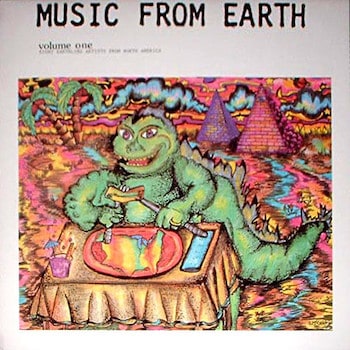 Various – Music From Earth (Imgrat)
Various – Music From Earth (Imgrat)
1986/Evening Post
Lovingly assembled by Californian Kiwi obsessive Ron Kane – who appeared as a “token American” on the latest Tall Dwarfs record – Music From Earth is a progress report on the warped way in which young Americans are dealing with various facets of pop in ’86.
Like NZ’s Outnumbered By Sheep, it’s an excellent induction to a specific area of musical sensibility (as opposed to another sub-genre).
Kane’s current group, The Manatees, provide threatening variations on what we’ve come to expect from his former group, The Decayes. Their ‘Fashiontown’ is an excellent chronicling of glitzy scene-jumpers seen through pleb eyes, and it features a guitar solo like you’ve never heard.
Ace Farren Ford with The King Brothers opens and closes proceedings, but his constipated Captain Beefheart impressions don’t gel as effectively as the bizarre things that Holidays In Sweden do to pop songs. Boo! is bubblegum and Electric Bill is updated barbershop. Another ex-Decayes, Mark Florin (with Beasley Cat) weighs in with an adventurous instrumental, A Red Hot Spot, but the final triumph belongs to Still Obscure, whose ‘Why Don’t We Stop?’ is utterly commercial and owns a fantastic riff. 7/10
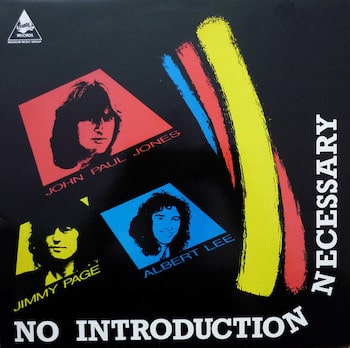 Various – No Introduction Necessary (Possum)
Various – No Introduction Necessary (Possum)
1986/Evening Post
Can’t figure this one out. The cover displays photographs of former father Led Zeppers Jimmy Page and John Paul Jones along with Albert Lee, yet of the 13 songs, Page plays on only six and Lee on only four. The songs themselves are late ‘60s/early ‘60s rhythm and blues and country-rock, they’re all performed in a sluggish session-muso manner, and they all feature a boorish, unnamed vocalist. Although there are no liner notes to reveal the origin of the sessions, I fervently believe that all concerned would rather have seen the tapes continue to gather dust. 2/10
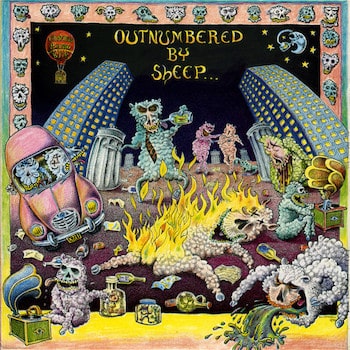 Various – Outnumbered By Sheep (Flying Nun)
Various – Outnumbered By Sheep (Flying Nun)
1986/Wellington City
Organised and financed by Auckland campus radio, Outnumbered By Sheep compiles 13 otherwise unavailable tracks by NZ bands and individuals. Stylistically, the contributors are close enough to the Flying Nun Hip Alternative syndrome for the resultant mix not to prove unpalatable. The two exceptions to this rule – singer/songwriters Kim Blackburn and Nick Smith, reside in the company of unsympathetic strangers. Best of the batch: Bird Nest Roys’ ‘Who Is The Silliest Rossie?’ signals a return to life on earth after their limp debut EP, Headless Chickens’ ‘Trigger’ is a half-formed but fascinating indication of an interesting future, Children’s Hour’s ‘Creeping Flesh’ is a mature and sombre end to a beginning, Fetus Productions’ ‘Sparks Fly’ is yet another angle on these visual shock absorbers, and the Martin Phillipps’ (Chills) radio jingle is a marvellously cheeky after-thought. There’s more but it’s markedly inferior to the above examples. Still, I’d buy it if I ever came down to earth. 7/10
Various – Rock And Roll – The Early Years (RCA)
1986/Evening Post
Whether the material on this collection fits into your definition of rock and roll or blues or rhythm and blues is irrelevant; if you haven’t got these seminal sides then maybe it’s the place to start. The years represented are 1954-1956, and while the pallid overtones of Bill Haley’s ‘Rock Around The Clock’ sound as infantile as ever, most of the offerings are as fresh as the day they were recorded – and they sound great, due to an obvious but uncredited remastering. Naturally, Sun label artists like Presley (‘That’s Alright Mama’) and Carl Perkins (‘Blue Suede Shoes’) are fully represented, along with more surprising black selections by the likes of Big Mama Thornton (‘Hound Dog’) and Muddy Waters (‘Hoochie Coochie Man’), and classics by Little Richard and Chuck Berry. Simultaneous video release. 7/10
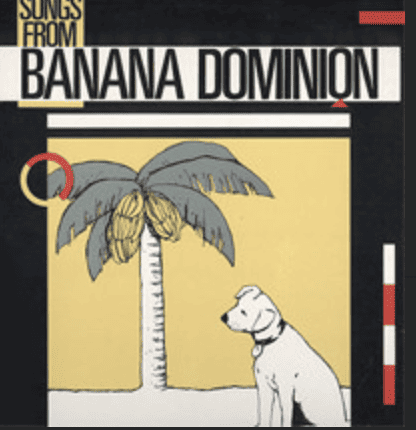 Various – Songs From Banana Dominion (Jayrem)
Various – Songs From Banana Dominion (Jayrem)
1984/TOM Magazine
As a compilation doing its best to showcase a representative sprinkling of recent NZ rock music, Jayrem (and compiler John Mowatt) cannot be faulted in their second such release.
Side the first goes for diversity: songs by Netherworld Dancing Toys, Sonya Waters, Pelicans and Hammond Gamble all have a loose feel tht complement each other well. The bad cut is a previously unreleased Midge Marsden filler, the great cut is Diatribe’s ‘Dangerous Game’.
Side the second is chart terrain. Many are bored to distraction by now with ‘Sierra Leone’ and ‘Outlook For Thursday’, but, for those that never ordinarily buy singles (the majority, I would guess, of the record-buying market) this side is a God-send.
NZ pop, on the strength of this record, is not quite the prime side of beef it once was, but it still has its chops. 6/10
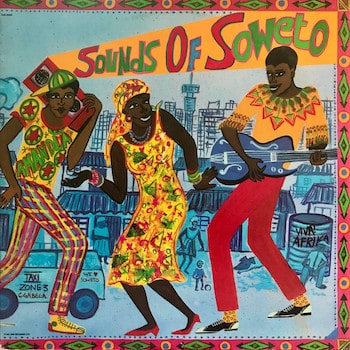 Various – Sounds Of Soweto (EMI)
Various – Sounds Of Soweto (EMI)
1987/Evening Post
Sounds Of Soweto is a double album of South African groups and singers, all of it swimming in and some of it swamped by technology.
This is the commercial face of South African music, and it comes with all the problems traditionally associated with an industry geared up to produce a palatable product, whatever the country of origin.
There’s nothing rootsy here, and if it’s those natural rhythms you’re after, disappointment beckons; nearly every band on Sounds Of Soweto uses sequencers, drum machines and (monophonic) synthesisers.
Condry Ziqubu gets the biggest slice of the action, with no less than four tracks, three of which are characteristically dominated by a nagging synth melody line that repeats itself ad nauseum. It’s a clever but infuriating pop trick. But just to complicate matters on ‘Confusion (Ma Afrika)’, he manages both a passionate vocal and a pertinent lyric.
Top session group Theta sports bassist Bakiti Khumalo, one of the featured players on Gracelands. Their stylised jazz/soul fusion doesn’t show particular promise. Old-timer Rex Raybanye (a trendy brand of South African sunglasses?) only just gets by with an underwhelmingly pleasant synth instrumental.
Elsewhere, we go from enjoyable but dull (the pop sounds of Mara Louw) to lush but flaccid (Supa Frika’s closing soul ballad), but in between, there are a few things worth hearing.
Kaputeni’s ‘Mali Kuhaba’ has an unusual chop-changing pace and fresh, forceful singing. The same vocal attributes could be said of ‘The Winners’ featuring Lionel Petersen, whose ‘Wedding Day’ is exceptionally joyful.
Johnny Clegg and Suvuka (formerly Juluka) are a black-and-white aggregation with a more conventional ‘rock’ sound than anything else here. Their instrumentation, by stark contrast, is spare and colourfully textured, their lyrics politically oriented.
Sounds Of Soweto cannot finally be recommended or dismissed. Most of its music seems in a state of transition; it’s honest, good, but not great. 6/10
Various – Sun Valley Sound (Reliable/Kog)
June 2003/Metro
The spirits of Joost Langeveld and Roger Perry loom large over this project, which finally confirms New Zealand’s ability to produce a half-decent homegrown House compilation, just at a time when House music is withering on the vine globally. Crystal clear recording and a penchant for either disco or funk are what separate these acts. 6/10
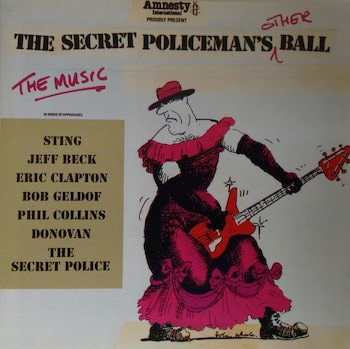 Various – The Secret Policeman’s Other Ball (Island)
Various – The Secret Policeman’s Other Ball (Island)
May 1982/In Touch
This is a very special live compilation. It’s an Amnesty International benefit concert which features pop stars out of group context. Sting does a melancholy ‘Roxanne’ and ‘Message In A Bottle. Bob Geldof does ‘I Don’t Like Mondays’. Phil Collins does ‘In The Air Tonight’ and ‘The Roof Is Leaking’. What a joy to hear pop music minus bass and drums! Jeff Beck and Eric Clapton get to duet on three songs, and there’s some more nostalgia in Donovan Leitch performing ‘Catch The Wind’ and the topical ‘The Universal Soldier’. The finale is a unison effort of ‘I Shall Be Released’. The spoken word humour of its companion piece is also worth a look-in. It includes skits by Rowan Atkinson and the usual crowd. 7/10
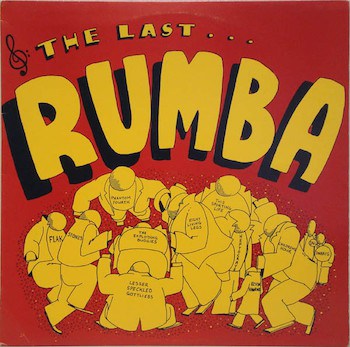 Various – The Last Rumba (Flying Nun)
Various – The Last Rumba (Flying Nun)
1984/TOM
This is the record of the celebration of the closure of the Auckland pub, and it’s as good as any selection of short performances by many groups in one night could possibly be.
The music binds well together, as most bands are Flying Nun ongoing projects, and nearly all are recognisably ‘punk’ in attitude. There’s a lot of anger here, and that’s fine by me.
So what’s best? Kevin Hawkins’ ‘Song With No Future’ hits the vitals with simplicity and bluntness (“I wasn’t born to make some fat cunt comfortable”) that’s comparable to Chris Knox’ (Tall Dwarfs) performance, except that Knox mixes desperation into his anger, and human frailty. But his song’s not as strong as his Hawkins’.
The second-best riff and prize for attack goes to The Exploding Budgies. Flak concentrate their efforts on percussion, and creating mysterioso undercurrents which almost make them compelling. This Sporting Life are shambolic but aggressive, and Children’s Hour finish the piece of plastic with a short but good bit of brooding angst. As for the rest. Well. 7/10
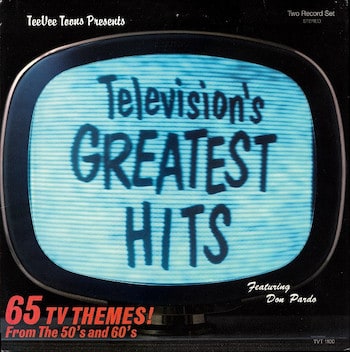 Various – Television’s Greatest Hits, 65 Themes From The 50s And 60s (Liberation)
Various – Television’s Greatest Hits, 65 Themes From The 50s And 60s (Liberation)
1986/Evening Post
Television’s theme tunes are rammed home so relentlessly that, more so than even our favourite records, their every little nuance is indelibly stamped on the windmills of our minds. The question: bereft of the box’s cheap glow and tinny speakers, will the music have something to tell us? Answer: not really. Some themes are genuinely memorable: Star Trek, The Twilight Zone, Mission Impossible, Alfred Hitchcock Presents, Mod Squad. But even these were created with images in mind. There is a predominance in this American collection of the crass, the overstated, the brassy, and the tacky. Some, through the passage of time, have gained novelty value: Popeye, Superman. Others remain irritating if not downright despicable: The Flintstones, The Patty Duke Show. Good value, but I think I’ll go read a book. 1/10
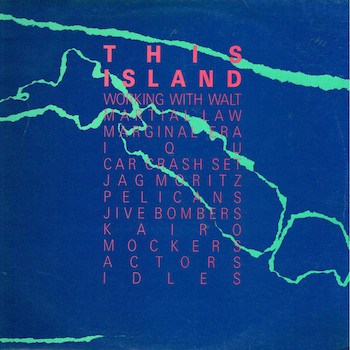 Various – This Island (Jayrem)
Various – This Island (Jayrem)
1984/TOM
This Island, otherwise known as yet another Jayrem compilation, is uneven in places and lacks the source diversity of previous releases. In other respects, it’s more consistent than its forbears. Those who favour Auckland techno will enjoy most of Side One, for instance, containing as it does tracks by Marginal Era, Car Crash Set and IQU. Also, we have the dubious pleasure of several tasters from yet-to-be-released platters including the Pelicans playing ‘Krazy Legs’, and Working With Walt’s very recent ‘The Prophet’. 6/10
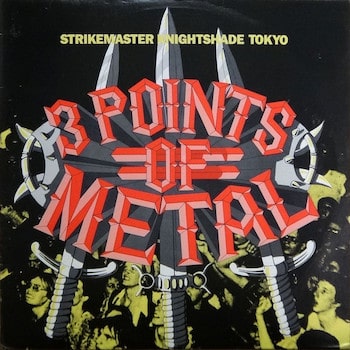 Various – 3 Points Of Metal (Jayrem)
Various – 3 Points Of Metal (Jayrem)
1984/TOM
Heavy bands yell out things like: “I feel wa-a-a-sted, “we’re gonna have a pa-ar-ty, al-right!”, Get it up, get it up”, “Here’s a little bit of rock’n’roll for ya,” and ‘We luv ya”.
It’s like, one big happy heavy family.
Godfearing Godzone heavy hackers earn unfathomable audience loyalty and seldom make records. It would have been a sure case of metalist discrimination had Jayrem not come to the cause sooner or later. And they have. And it’s good. And it’s bad. It makes sense. It’s nonsense.
Poor old Ranji Nana. His Ascot Theatre will never be the same.
3 Points Of Metal is excerpts from a metal rage held at the former film palace, more recently disco dreamwagon. Ranji thought the Jivebombers were as loud as loud could get! Ha-ha!
This petroleum melt-down is among the first decently-recorded metal product of a local nature. Those who enjoy these bands live will think it’s dinkum headbang-and-a-half. The rest of us will notice some unusual aspects to these examples of heavy metal.
Apart from Tokyo, whose token nod is a post-Purple nonsense grind, this new order of metal (same as the old order) is not really very heavy. Knightshade’s grab at the entire second side features plenty of yer typical ‘heavy’, faster-than-the-speed-of-brain guitar work, and a tendency towards that wacky heavy singing style: you know, the one that sounds like a horse whose balls have been chopped off right in the middle of doing you know what.
But the music ain’t AC/DC.
The only thing heavy or metal about Strikemaster is the attitude, which has all the trappings/benefits, all of the cocksure macho braggadocio, and hasty boys’ own swagger as featured in a song like ‘Wasted’.
Musically, Strikemaster are almost as pleasingly mundane as the last episode of The Young Doctors. They go for moderately tricky time-changes which, in fact, constipate the flow. They could be Thin Lizzy but they’re really Status Quo. They truly deserve that band’s crown of competence, a vote from the people.
It is Strikemaster’s very normality that makes them a band for the common man. You’ll love them. 3/10
Various – Trespass (Sire/Warner)
1993/RTR Countdown
As rap soundtracks/compilations go, this is pretty good. The title tune has heavyweights Ice-T and Ice Cub doing their thing together for the first time; Sir Mix-A-Lot’s ‘I Check My Bank’ is predictable but kicks it up; and Lord Finesse’s ‘You Know What I’m About’ is genuinely chilling. Right time, right place, all right. 6/10
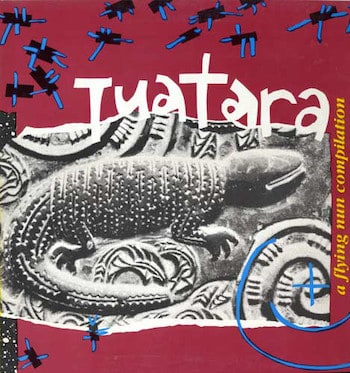 Various – Tuatara (Flying Nun)
Various – Tuatara (Flying Nun)
1986/Wellington City Magazine
Taking four years to issue forth one lone compilation doesn’t bespeak a lack of good records to choose from. It simply means that now it’s here, Tuatara is a definitive summation thus far of Flying Nun’s history. Lots of great tracks are not here, but that’s not the point. The chosen 12 expresses both the variety and single-mindedness of NZ’s big little label and succeeds as an album in its own right. In fact, virtually everything here is significant or important in terms of modern New Zealand music. By my reckoning all but four of these songs are classics, all but one of the rest are simply great, and that one lesser track is interesting. Without overstating, then, this is one of the year’s major releases. If you’re inclined to pigeon Flying Nun as home of the Dunedin strum, you’ll be shocked by sounds as diverse as Marie And The Atom’s ethereal ‘Isol’, the barely moving somnambulance of The Expendables’ ‘Man With No Desire’ and the hard paranoia of Fetus Productions’ ‘State To Be In’. 8/10
Various – Urgh! A Music War! (A&M)
Dec 1981/In Touch
Double LP soundtrack to film of same name. Roughly in ‘new wave’ territory, it is simply a variety of groups and artists recorded “live” (one song each) – so essentially it’s a sampler album containing versions of songs elsewhere unobtainable. Lots of good moments (Magazine, Devo, Au Pairs) and a couple of brilliant ones (Pere Ubu and The Cramps), but these are sandwiched unattractively between uncomplimentary inferiorities that tend to diminish effectiveness. From great to pitiable. Tape the best. 5/10
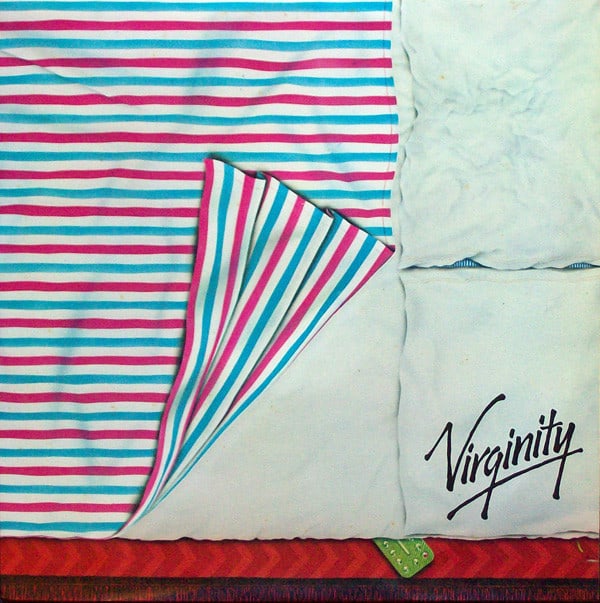 Various Artists – Virginity (Virgin)
Various Artists – Virginity (Virgin)
1979/Evening Post
Mike Oldfield and the Sex Pistols have but one thing in common – Virginity, a New Zealand-compiled cost price double album sampling choice cuts from the Virgin catalogue.
Up to 1976, the Virgin roster was typified by their first release (in 1973), Oldfield’s multimillion-selling Tubular Bells, but an about-face transpired with the coming of punk and new wave.
They were the first major company to realise the worth of this music, hence their near-total monopoly on much of the best British music today.
Surprisingly, side three of Virginity, which features several of their early signings, is largely disappointing.
Mike Oldfield rehashes Tubular Bells once again, synthesiser group Tangerine Dream trot out a tired-sounding atmospheric soundscape (mood music), songwriter Kevin Coyne proves he’s as bankrupt of musical ideas as he is exceptional lyrically, former new wave group The Motors go disco, and Johnny Rotten and his mum spew out an overlong, self-important interview.
The remaining sides are sheer delight though. On Side 1, Magazine – brain-child of intellectual Howard Devoto – and XTC get two tracks apiece. Interview and Penetration throw some exceptional power-pop our way, and John Lydon’s (aka Rotten’s) new group Public Image floor us with ‘Low Life’, at once a cry of pain and derision.
Side 2 is predominantly disco. Former glam-rockers Sparks team up with Donna Summer’s producer Giorgio Moroder for the ingenious ‘La Dolce Vita’, and Sparks crop up again producing ‘I Want A Man’ by Noel, whoever that may be. Supercharge weigh in with an overlong and slight disco satire. The Records appear with the straight pop of ‘Girls That Don’t Exist’, and Steve Hillage plays a lengthy virtuoso guitar solo on Donovan’s ‘Hurdy Gurdy Man’.
Two classic new wave songs, the Members’ ode to living in a bed-sit ‘Solitary Confinement’, and the Skids’ ‘Into The Valley’, open Side 4, and two from the Virgin reggae catalogue (one by the religious Culture, the other by the extravagant Sly Dunbar) close the album.
In between are sandwiched the Sex Pistols’ version of The Who’s ‘Substitute’ and the straight-ahead energetic rock of the Ruts’ ‘Babylon’s Burning’. Anyone even casually interested in contemporary music should be loath to miss this. 7/10
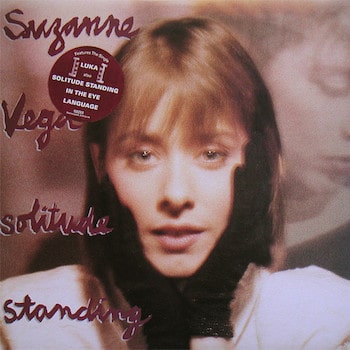 Suzanne Vega – Solitude Standing (A&M)
Suzanne Vega – Solitude Standing (A&M)
1987/Evening Post
The pop industry’s latest female flame is Suzanne Vega. Sitting at the top of the album charts, Vega makes an unlikely looking idol: thin, greasy-looking hair, schnoz just on the right side of the Streisand stakes. But aah, those eyes which art made in heaven, simultaneously lonely and seductive. And the blurred, petulant, rosy lips almost life-size on the cover of her second album.
There used to be an easy classification for artistes working in this domain. In fact, there were many classifications, but the least offensive described the territory as “bedsit land”. But while Vega may pander only too obviously to an identifiable market, it’s wrong to be unfairly dismissive. It’s easy to take a pot-shot at one who so easily fits into the persona of early Joni Mitchell, albeit mixed with a little New York sophistication.
The first Joni Mitchell album is, in fact, the reference point. Although Mitchell soon moved on to more personal and musically challenging material, her first album was a melancholy collection of tales about people and life in the big city.
Vega takes it a step further. Her stories are less complete, but more revealing in evoking the feelings and atmospheres of the people and places. I can see why it’s easy to fall for Vega, with her intensely measured delivery of lines which, while short of great poetry, manage to draw you into the shadows of the scenarios she is describing.
They’re not personal introspections, but reflections on various perspectives of loneliness and sorrow. No, it doesn’t make for ecstatic or howlingly funny listening, but neither is it intended for the club set. Suzanne Vega does perform folk music, and her band’s guitarist certainly doesn’t sound like Frank Zappa on a bad day. Frank Zappa doesn’t have bad days. Van Morrison, however, does.
Vega’s band could be accused of blandness, but they do her voice – that tiny feminine whisper – a service with their patterned sound, which adds texture and compositional resonance to her structures.
For the future, Vega will have great difficulty adapting her style to change. Her one-mood style may benefit her right now, but it could be a crashing bore over an entire career. And if she ever really opened up and sang, I think she’d blow her cool. 6/10
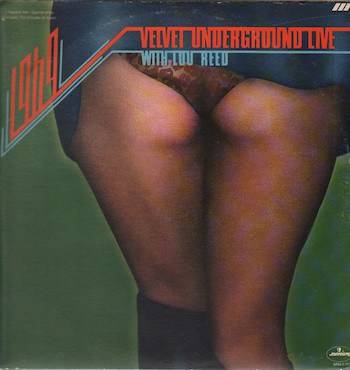 The Velvet Underground – 1969 (Mercury)
The Velvet Underground – 1969 (Mercury)
1970/1980/Evening Post
One thing at which the music industry is particularly adept is creating (or exaggerating and marketing) saleable cult rock heroes.
The most reliable varieties of cult rock heroes are the dead, permanently incapacitated or incarcerated ones; unfortunates fooled into believing their record company’s press releases about themselves.
Elvis Presley, Janis Joplin (oh the list is endless) languish in ad-copy heaven either because they became convinced of their own immortality (in Presley’s case) or saw it as an essential that they carry out the inevitably sad, stupid, extreme conclusion of the better-to-burn-out-than-fade-away ethic (in Joplin’s and Jim Morrison’s case).
The brain behind early, inspired Pink Floyd, Syd Barrett, is now a celebrated empty-headed acid casualty. Some maintain that Lou Reed belongs in a similar category.
Irresponsible critic circles and other fashionables by the lure of decadence and drugs bestow upon Reed near-legendary status, which stems from his spell at the helm of seminal New York ‘60s band The Velvet Underground, a unit many claim to be the important forefathers of punk rock.
Listening to their reissued classic 1969 yields little explanation of this phenomenon. The tastelessly tacky cover hides 103 minutes of supposedly innovative (I would prefer the epithet “dirgefully dated”) music, including well-known ‘Sweet Jane’, ‘Waiting For The Man’ and the notorious ‘Heroin’.
These are songs which, according to The Rolling Stone Record Guide (which incidentally rates this album five stars) reflects lyrically “…the horrors and joys of drugs, the realities of life on the street.” Transpose the word ‘glorify’ onto that last ‘reflect’. Then look (and listen, if you dare) to the (un)natural evolution: the mellow washed-out shadow of a Reed on the 1980 effort Growing Up In Public (Arista). 4/10
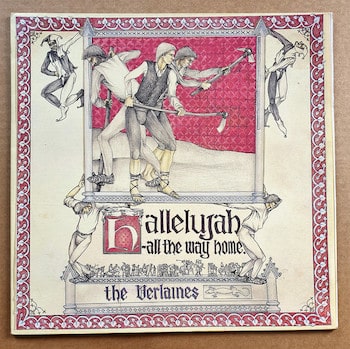 The Verlaines – Hallelujah (Flying Nun)
The Verlaines – Hallelujah (Flying Nun)
1986/Wellington City Magazine
Art meets the Dunedin strum circa 1985. The South’s most acclaimed rock trio have delivered an ambitious debut longplayer which is successful because the songs contain compositional excellence, not because of the much lauded mixture of rock and classical instrumentation. Leader Graeme Downes’ schooling in composition is clear here, where often the arrangements mimic the studies perhaps too formally. It’s unconditionally inspiring to hear classical/medieval forms utilised in a contemporary context, but to hear that tinny guitar strum providing particularly brittle bones to the pieces makes one wish Downes had scored the whole thing for a bunch of selected musicians minus The Verlaines themselves! So Hallelujah works perhaps despite its ambitions and simply because Downes’ songs and lyrics are the stuff of greatness. The man writes with a common touch of the prlblems that afflict us, day to day, and for this The Verlaines get my vote. 7/10
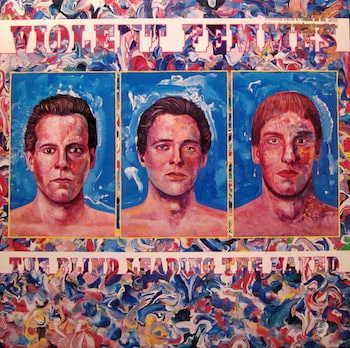 Violent Femmes – The Blind Leading The Naked (WEA)
Violent Femmes – The Blind Leading The Naked (WEA)
1986/Wellington City
Gordon Gano’s scrappy band promise worth by association, but not even the quality of the company they keep can elevate their thrashing brown shoes past the watermark of mundanity. Talking Head Jerry Harrison produces to perfection, and two of the world’s finest guitarists (Fred Frith and Leo Kottke) lend a fingerpickin’ hand on a couple of cuts. But really, I’ve no faith in Gano’s somewhat insincere-sounding evangelical fervour (i.e., Faith). In the Violent Femmes I see a group of normal trading on an image tailor-made to appeal to young normal to be perceived as being eccentric. The result? It’s danceable, it’s frantic. Docked a notch for pretention. 4/10

